Cathepsin B Polyclonal Antibody
- Catalog No.:YT0679
- Applications:WB;IHC;IF;ELISA
- Reactivity:Human;Mouse;Rat
- Target:
- Cathepsin B
- Fields:
- >>Autophagy - animal;>>Lysosome;>>Apoptosis;>>Antigen processing and presentation;>>NOD-like receptor signaling pathway;>>Renin secretion
- Gene Name:
- CTSB
- Protein Name:
- Cathepsin B
- Human Gene Id:
- 1508
- Human Swiss Prot No:
- P07858
- Mouse Gene Id:
- 13030
- Mouse Swiss Prot No:
- P10605
- Rat Swiss Prot No:
- P00787
- Immunogen:
- The antiserum was produced against synthesized peptide derived from human Cathepsin B. AA range:168-217
- Specificity:
- Cathepsin B Polyclonal Antibody detects endogenous levels of Cathepsin B protein.
- Formulation:
- Liquid in PBS containing 50% glycerol, 0.5% BSA and 0.02% sodium azide.
- Source:
- Polyclonal, Rabbit,IgG
- Dilution:
- WB 1:500 - 1:2000. IHC 1:100 - 1:300. ELISA: 1:5000.. IF 1:50-200
- Purification:
- The antibody was affinity-purified from rabbit antiserum by affinity-chromatography using epitope-specific immunogen.
- Concentration:
- 1 mg/ml
- Storage Stability:
- -15°C to -25°C/1 year(Do not lower than -25°C)
- Other Name:
- CTSB;CPSB;Cathepsin B;APP secretase;APPS;Cathepsin B1
- Observed Band(KD):
- 38,40,25kD
- Background:
- This gene encodes a member of the C1 family of peptidases. Alternative splicing of this gene results in multiple transcript variants. At least one of these variants encodes a preproprotein that is proteolytically processed to generate multiple protein products. These products include the cathepsin B light and heavy chains, which can dimerize to form the double chain form of the enzyme. This enzyme is a lysosomal cysteine protease with both endopeptidase and exopeptidase activity that may play a role in protein turnover. It is also known as amyloid precursor protein secretase and is involved in the proteolytic processing of amyloid precursor protein (APP). Incomplete proteolytic processing of APP has been suggested to be a causative factor in Alzheimer's disease, the most common cause of dementia. Overexpression of the encoded protein has been associated with esophageal adenocarcinoma and other tumors.
- Function:
- catalytic activity:Hydrolysis of proteins with broad specificity for peptide bonds. Preferentially cleaves -Arg-Arg-|-Xaa bonds in small molecule substrates (thus differing from cathepsin L). In addition to being an endopeptidase, shows peptidyl-dipeptidase activity, liberating C-terminal dipeptides.,function:Thiol protease which is believed to participate in intracellular degradation and turnover of proteins. Has also been implicated in tumor invasion and metastasis.,similarity:Belongs to the peptidase C1 family.,subcellular location:Identified by mass spectrometry in melanosome fractions from stage I to stage IV.,subunit:Dimer of a heavy chain and a light chain cross-linked by a disulfide bond.,
- Subcellular Location:
- Lysosome . Melanosome . Secreted, extracellular space . Apical cell membrane ; Peripheral membrane protein ; Extracellular side . Identified by mass spectrometry in melanosome fractions from stage I to stage IV (PubMed:17081065). Localizes to the lumen of thyroid follicles and to the apical membrane of thyroid epithelial cells (By similarity). .
- Expression:
- Expressed in the stratum spinosum of the epidermis. Weak expression is detected in the stratum granulosum.
- June 19-2018
- WESTERN IMMUNOBLOTTING PROTOCOL
- June 19-2018
- IMMUNOHISTOCHEMISTRY-PARAFFIN PROTOCOL
- June 19-2018
- IMMUNOFLUORESCENCE PROTOCOL
- September 08-2020
- FLOW-CYTOMEYRT-PROTOCOL
- May 20-2022
- Cell-Based ELISA│解您多样本WB检测之困扰
- July 13-2018
- CELL-BASED-ELISA-PROTOCOL-FOR-ACETYL-PROTEIN
- July 13-2018
- CELL-BASED-ELISA-PROTOCOL-FOR-PHOSPHO-PROTEIN
- July 13-2018
- Antibody-FAQs
- Products Images
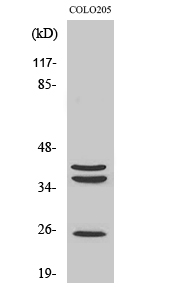
- Western Blot analysis of various cells using Cathepsin B Polyclonal Antibody
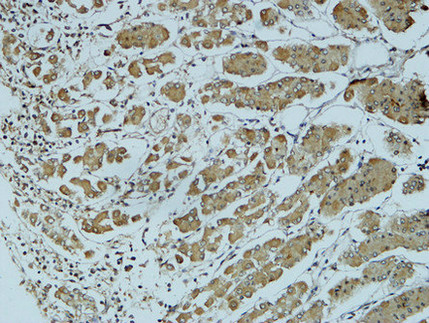
- Immunohistochemical analysis of paraffin-embedded Human colon. 1, Antibody was diluted at 1:200(4° overnight). 2, High-pressure and temperature EDTA, pH8.0 was used for antigen retrieval. 3,Secondary antibody was diluted at 1:200(room temperature, 30min).
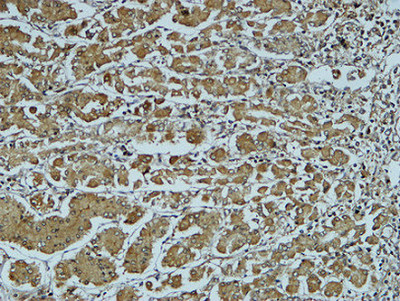
- Immunohistochemical analysis of paraffin-embedded Human colon. 1, Antibody was diluted at 1:200(4° overnight). 2, High-pressure and temperature EDTA, pH8.0 was used for antigen retrieval. 3,Secondary antibody was diluted at 1:200(room temperature, 30min).
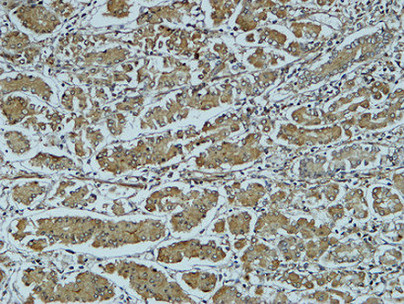
- Immunohistochemical analysis of paraffin-embedded Human colon. 1, Antibody was diluted at 1:200(4° overnight). 2, High-pressure and temperature EDTA, pH8.0 was used for antigen retrieval. 3,Secondary antibody was diluted at 1:200(room temperature, 30min).
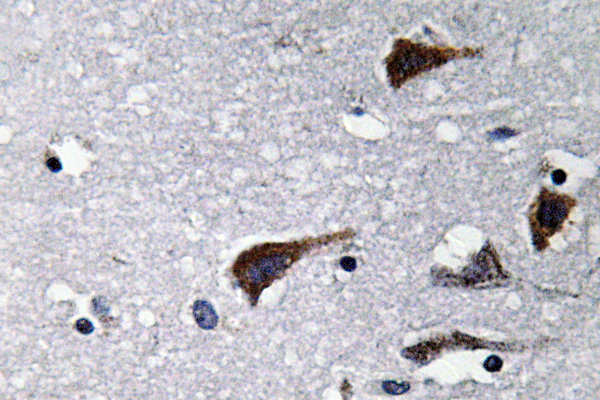
- Immunohistochemistry analysis of Cathepsin B antibody in paraffin-embedded human brain tissue.
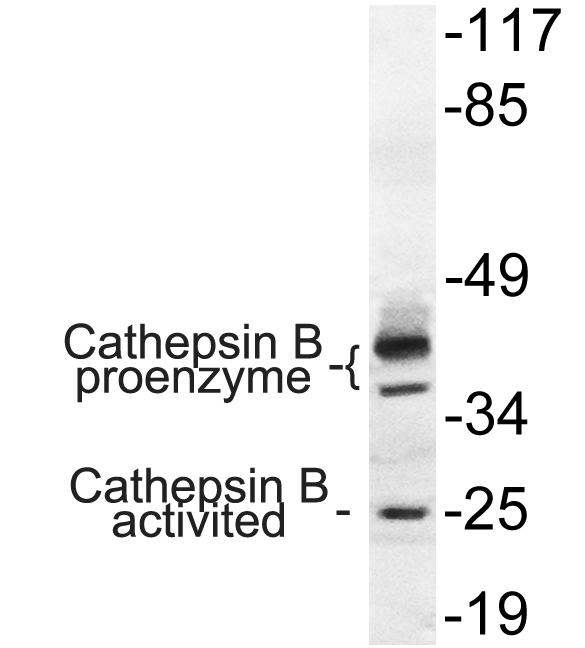
- Western blot analysis of lysate from COLO cells, using Cathepsin B antibody.



